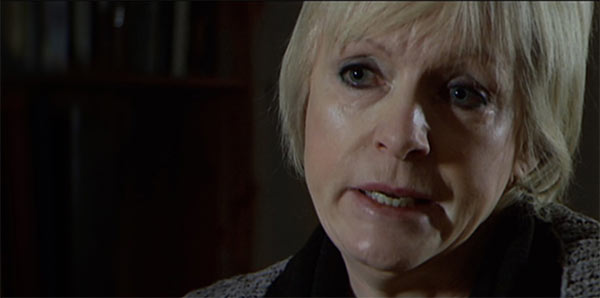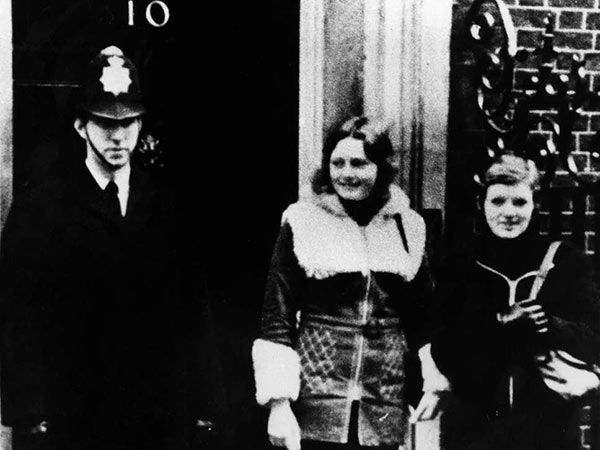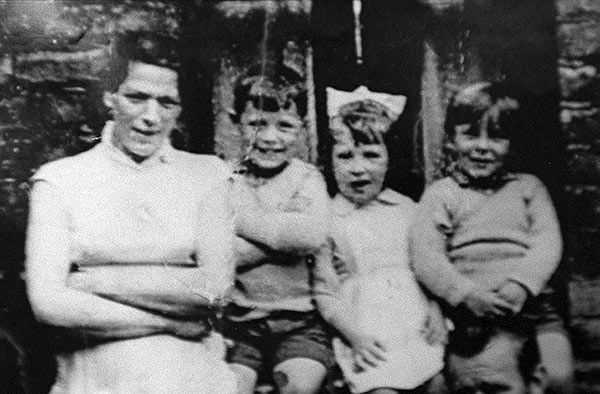I Dolours
Published in Issue 5 (September/October 2019), Reviews, Volume 27RTÉ1, 10 June 2019
Directed by Maurice Sweeney
By Brian Hanley
Angst has been expressed by some commentators regarding the difficulties that the forthcoming centenary of the Irish Civil War will present. I Dolours is a timely reminder that the most contentious anniversaries will actually be those of the more recent Irish conflict. The continuing ‘decade of centenaries’ will add an extra frisson to these discussions, however, as similarities and differences between the ‘old IRA’ and their modern counterparts are bound to be highlighted. Dolours Price, the subject of this documentary, made international headlines with her sister Marian in the 1970s, when they undertook a long hunger strike in a British prison. I Dolours is a stylish production based around relatively sparse interview footage with Price (some of it used previously in 2010’s Voices from the Grave), dramatic re-enactments and news reports. Though now the norm, these re-enactments are not documentary evidence and, indeed, can be misleading.

Above: I Dolours is a stylish production based around relatively sparse interview footage with Price.
Dolours Price came from a republican family living within a broader and often unsympathetic Belfast nationalist community. Her father Albert took part in the 1939 bombing campaign in Britain. We are not told that the two ‘mates’ of Albert Price, hanged for the IRA’s Coventry bombing, were Peter Barnes and James McCormack, the return of whose bodies in July 1969 saw public evidence of disenchantment within the modern republican movement. All too often throughout the documentary there is a failure to contextualise individuals and events when they are mentioned. Three generations of Price women served time in Armagh, and family lore suggested to the young Dolours that imprisonment ‘wasn’t all that bad’; only much later, after her own arrest, did her mother tell her that fourteen days inside had felt like ‘fourteen years’. In January 1969 the Prices took part in the People’s Democracy (PD) march that was ambushed at Burntollet. The sisters were not the only members of PD later to join the IRA, but did they really, coming from the background they did, envisage peaceful change before that march was attacked? It is not incumbent on documentary-makers to explain everything, but there is too little discussion as to how violence erupted in August 1969. Price inevitably views these events through the prism of the Official/Provisional split. Thus she asserts that the Belfast IRA ‘didn’t have any guns’, though in fact it certainly had some and, indeed, used them to defend nationalist areas. She indicts the Belfast republican leadership as ‘cowards’ intent on fleeing to Dundalk, but, of those she names, Liam McMillen was arrested during the fighting in Clonard, Jim Sullivan became chairman of the Citizens’ Defence Committee on the Falls Road and Bobby McKnight was sent south but to organise the movement of weapons.
There is interesting contemporary footage of Seamus Costello, Joe McCann and Gerry Adams at Bodenstown, but none of these men are identified or their significance discussed. The most controversial aspects of I Dolours were revealed some years ago in Voices from the Grave, when Belfast republican Brendan Hughes described an IRA unit called ‘the Unknowns’, part of whose remit involved ‘disappearing’ informers. Price suggests that this was something that had ‘never before been done’ by the IRA but, as Pádraig Óg Ó Ruairc has shown, at least 25 people were ‘disappeared’ by the ‘old IRA’. Price contends that this practice constituted a ‘war crime’ and argues that spies should instead have been shot and ‘thrown out on the street’. Rooting out informers, however, is always problematic because, as historian John O’Callaghan notes of the Tan War period, ‘IRA justice was not blind and not everyone was equal before IRA law’. Price laments the fate of Joe Lynskey, an IRA man who organised the shooting of the husband of the woman with whom he was having an affair. The man, a Provisional, survived and assumed that he had been targeted by the Officials. An Official supporter, Desmond Mackin, was shot dead as a result, though this is not mentioned in the documentary.
In contrast, Price shows scant sympathy for Jean McConville, whom she claims was ‘very arrogant’. Indeed, she states that McConville told her that ‘those Provo bastards wouldn’t have the balls to shoot me’. This description does not tally with any contemporary account of the troubled woman attempting to raise ten children in Divis Flats, and the language used sounds anachronistic.
The Price sisters were part of an IRA unit sent in 1973 to bomb London but, betrayed by an informer, they were captured. Undoubtedly brave, the Prices endured 208 days on hunger strike, being force-fed on 180 of them. The sisters’ fast to demand repatriation to Ireland drew sympathy beyond republican ranks. Eamon Dunphy, then a Charlton player, spoke publicly in their support, while a song, Bring Them Home, made the Irish charts, though none of this features here. Ultimately the Prices were repatriated but their ordeal contributed to both sisters developing anorexia. Dolours Price served the rest of her sentence in Armagh, where she was estranged from fellow IRA prisoners (though why is never explained), and was eventually released on health grounds. Throughout this segment news coverage of the H-Block hunger strike features heavily, though Price herself makes no mention of that issue.

Above: Dolours Price (right), with her sister Marian, outside 10 Downing Street, c. 1972.

Above: Jean McConville with three of her ten children c. 1970. Price, who claimed to have been involved in her abduction in 1972, showed scant sympathy for her fate.
Price turned to alcohol and anti-depressants to deal with trauma, and these contributed to her lonely death in 2013. Though she does not appear to have been politically active after her release, Price became a strong critic of the Peace Process and especially of Gerry Adams. It is difficult not to conclude that a great deal of the media interest in her story is that it affords an opportunity to indict Adams. Price’s own critique of the process, that she ‘couldn’t live with … failure’, seems motivated by regret for suffering both inflicted and endured, but the documentary never makes clear exactly what she was fighting for. In writing the history of the northern war we are unlikely to have the benefit of witness statements and pension files. Hearing the voices of activists like Price can tell us part of the story. In that case, perhaps what historians can best do is attempt to fill in the gaps and omissions that will inevitably be part of these retellings.
Brian Hanley is the author of The impact of the Troubles on the Republic of Ireland, 1968–79: boiling volcano? (Manchester University Press, 2018).
















